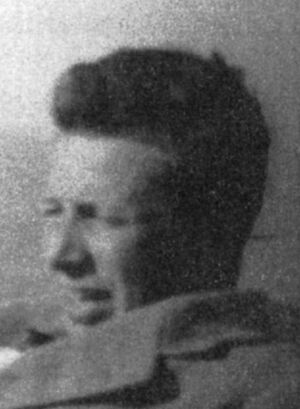Walter Heitler (nonfiction)
Walter Heinrich Heitler (German: [ˈhaɪtlɐ]; 2 January 1904 – 15 November 1981) was a German physicist who made contributions to quantum electrodynamics and quantum field theory.
He brought chemistry under quantum mechanics through his theory of valence bonding.
In Zurich, with Fritz London, Heitler applied the new quantum mechanics to deal with the saturable, nondynamic forces of attraction and repulsion, i.e., exchange forces, of the hydrogen molecule. Their valence bond treatment of this problem, was a landmark in that it brought chemistry under quantum mechanics. Furthermore, their work greatly influenced chemistry through Linus Pauling, who had just received his doctorate and on a Guggenheim Fellowship visited Heitler and London in Zurich, as Pauling spent much of his career studying the nature of the chemical bond. The application of quantum mechanics to chemistry would be a prominent theme in Heitler's career.
While Heitler was at Göttingen, Adolf Hitler came to power in 1933. With the rising prominence of anti-Semitism under Hitler, Max Born took it upon himself to take the younger Jewish generation under his wing. In doing so, Born arranged for Heitler to get a position that year as a Research Fellow at the University of Bristol, with Nevill Francis Mott.
At Bristol, Heitler was a Research Fellow of the Academic Assistance Council, in the H. H. Wills Physics Laboratory. At Bristol, among other things, he worked on quantum field theory and quantum electrodynamics on his own, as well as in collaboration with other scientific refugees from Hitler, such as Hans Bethe and Herbert Fröhlich, who also left Germany in 1933.
With Hans Bethe, he published a paper on pair production of gamma rays in the Coulomb field of an atomic nucleus, in which they developed the Bethe-Heitler formula for Bremsstrahlung.
Heitler also contributed to the understanding of cosmic rays, as well as predicted the existence of the electrically neutral pi meson.
In 1936, Heitler published his major work on quantum electrodynamics, The Quantum Theory of Radiation, which marked the direction for future developments in quantum theory.[26] The book appeared in many editions and printings, even being translated in Russian. After the fall of France in 1940, Heitler was briefly interned on the Isle of Man for several months.
Heitler remained at Bristol eight years, until 1941, when he became a professor at the Dublin Institute for Advanced Studies, which was arranged there by Erwin Schrödinger, Director of the School for Theoretical Physics.
At Dublin, Heitler's work with H. W. Peng on radiation damping theory and the meson scattering process resulted in the Heitler-Peng integral equation.
During the 1942–1943 academic year, Heitler gave a course on elementary wave mechanics.
Schrödinger resigned as Director of the School for Theoretical Physics in 1946, but stayed at Dublin, whereupon Heitler became Director. Heitler stayed at Dublin until 1949, when he accepted a position as Ordinarius Professor for Theoretical Physics and Director of the Institute for Theoretical Physics at the University of Zurich, where he remained until 1974, when he retired.
In 1958, Heitler held the Lorentz Chair for Theoretical Physics at the University of Leiden. While in Zurich, after some years, he began writing on the philosophical relationship of science to religion.
His books were published in German, English, and French.
In the News
Fiction cross-reference
Nonfiction cross-reference
- Erwin Schrödinger (nonfiction)
- Fritz London (nonfiction)
- Hans Bethe (nonfiction)
- Max Born (nonfiction)
- Physicist (nonfiction)
External links:
- Walter Heitler @ Wikipedia
